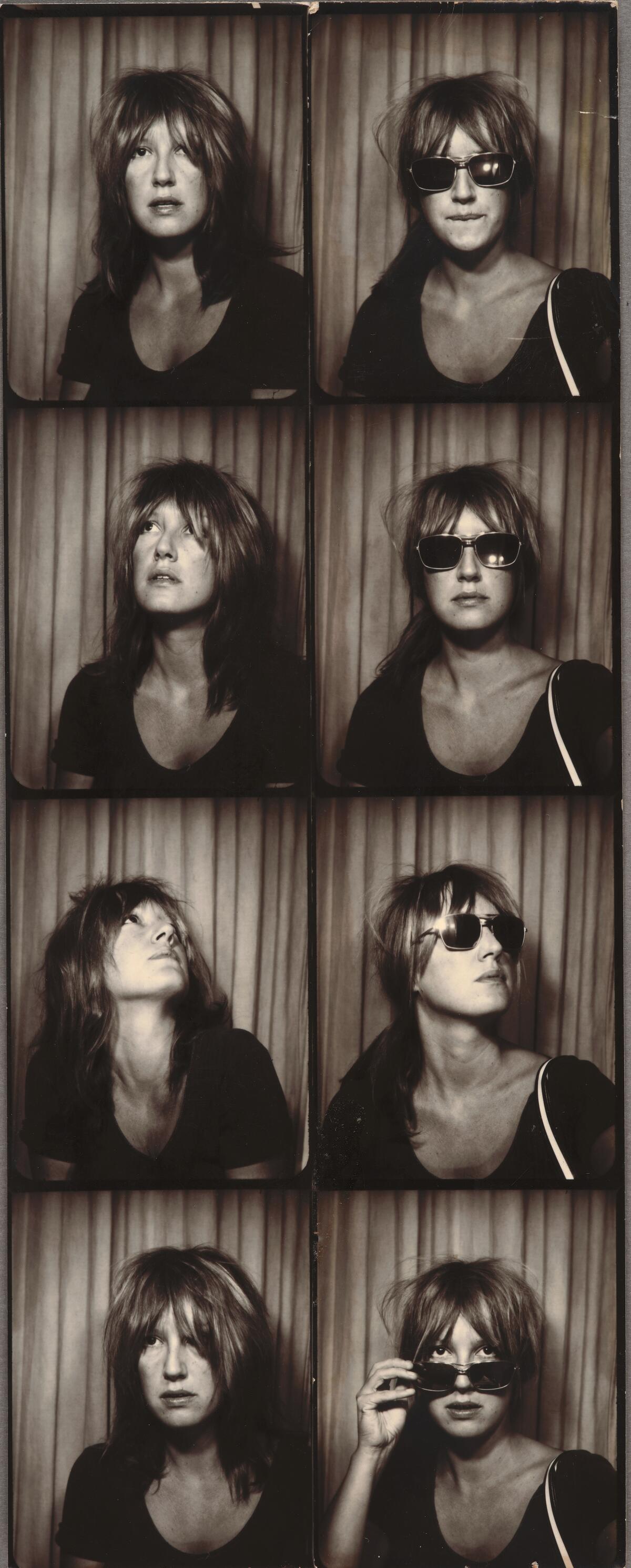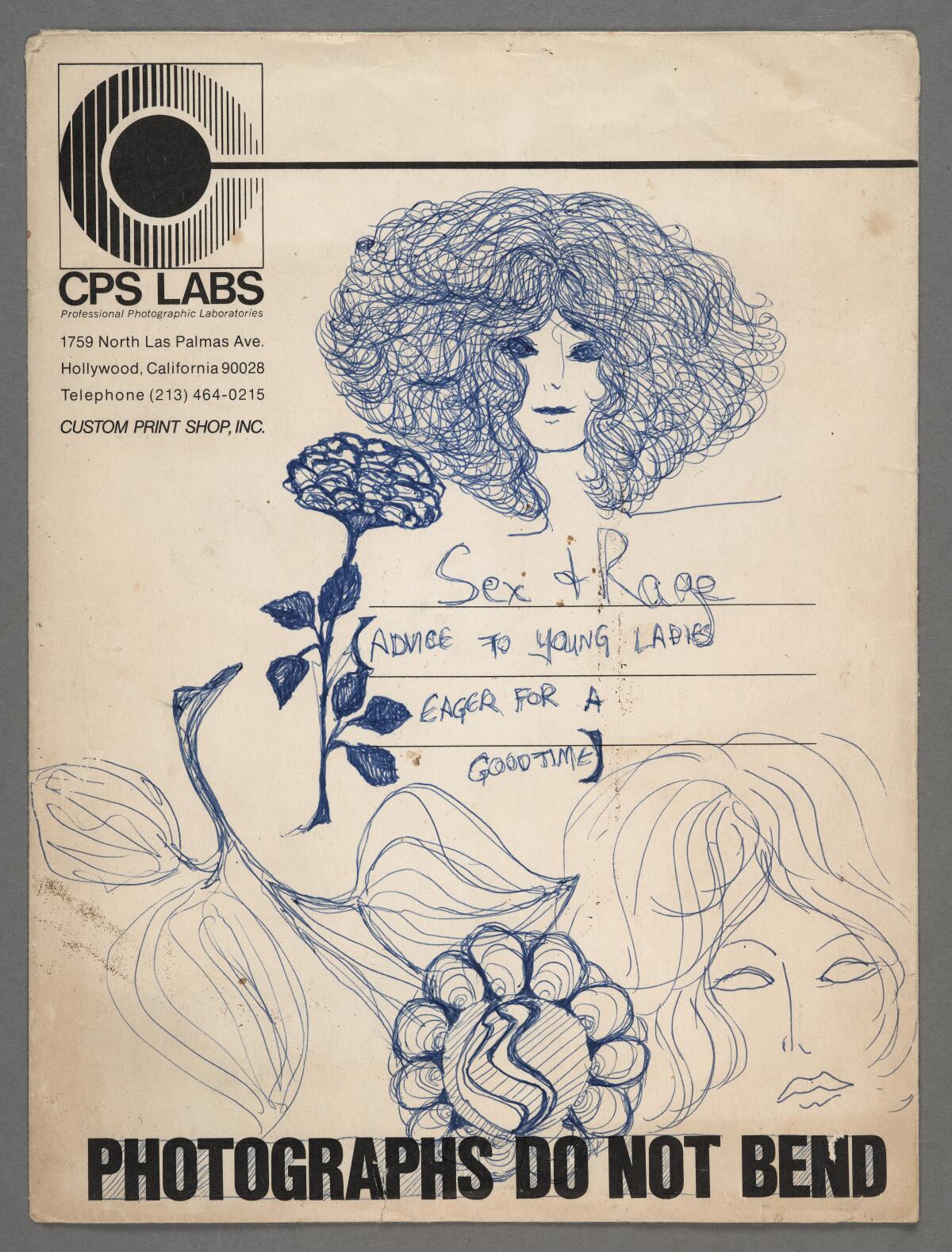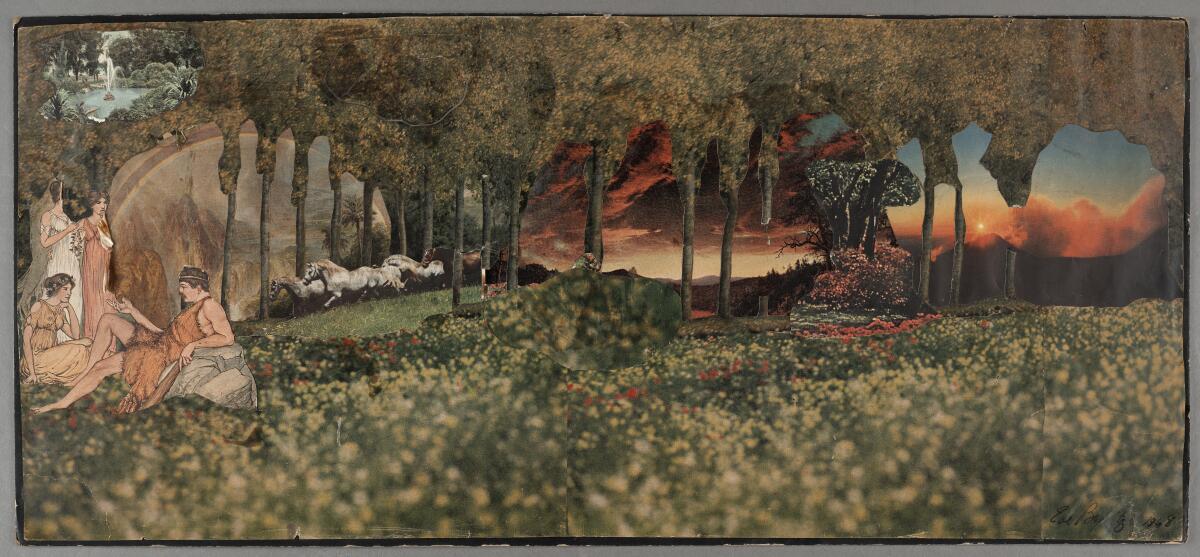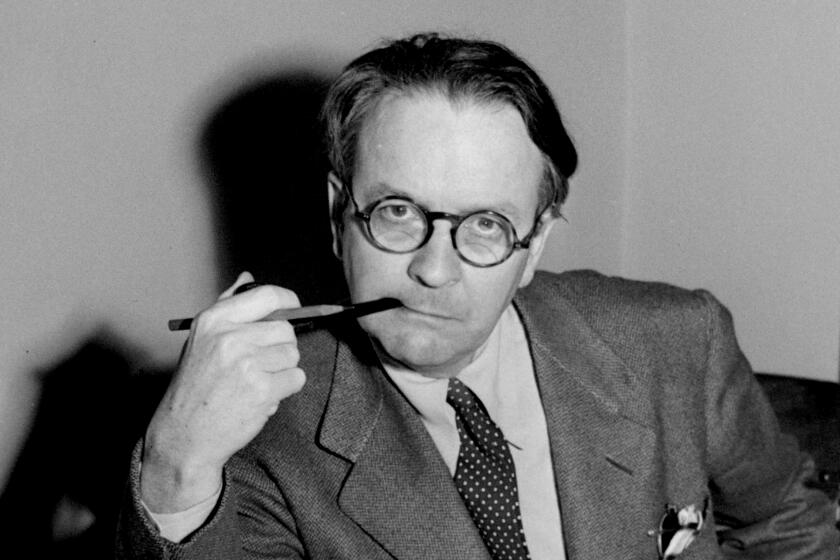The Huntington Library acquires archive of Eve Babitz, the late L.A. author

- Share via
The archive of Eve Babitz, the late Los Angeles author, has found a home.
The Huntington Library, Art Museum, and Botanical Gardens has acquired a collection of art, manuscripts, journals, photographs and correspondence from the late author spanning from 1943 to 2011. The museum also announced that it will house the work of fellow L.A. writers Eloise Klein Healy, the city’s first poet laureate, and Gloria Stuart, the late artist and Oscar-nominated actress.
Babitz, who captured and embodied the culture of L.A. beginning in the 1960s in works like “Eve’s Hollywood,” “Slow Days, Fast Company” and “Sex and Rage,” died Dec. 17 from complications of Huntington’s disease. She was 78.
Eve Babitz, the author known for chronicles of L.A. drawn largely from her life, died last week at 78. See our full coverage past and present
“She was very committed to Los Angeles,” said Karla Nielsen, curator of literary collections at the Huntington. “In her early 20s, she spent her time in New York and Rome, but she really loved the city. We see that she found interesting circles to travel with here, and they weren’t the same all the time.” From “the Chateau Marmont, Beverly Hills Hotel, music-Hollywood world” and on into other creative scenes, “you see her growing up in the exciting cultural world of L.A. but also committing not to settle down.”
Babitz was a friend (and often lover) of some of the greatest artistic luminaries of her time, including Jim Morrison, Harrison Ford, Annie Leibovitz, Steve Martin, Linda Ronstadt and Ed Ruscha. The archive includes photos she took of some of those famous companions, drafts of books and articles, original works of art, personal journals and more than 500 letters. Together they document a life that was never neatly divided between personal and professional.

Standout items in the archive, contained in nearly two dozen cartons, include a handwritten draft of Babitz’s first, still-unpublished book, “Travel Broadens”; a draft of her first article, “The Sheik,” published in 1972 in Rolling Stone magazine; extensive correspondences with Victoria Wilson, her longtime editor at Knopf; letters with lovers and friends including actor Brian G. Hutton and screenwriter Dan Wakefield; and individual photographs she took of Martin, Ronstadt, Leibovitz, Gram Parsons, the Byrds and others. Also in the collection are some of Babitz’s collages, drawings, address books, galleys and datebooks.
Among Nielsen’s favorites is a drawing Babitz made for “Sex and Rage.”
“One thing I love about it is that it foregrounds the subtitle [‘Advice to Young Ladies Eager for a Good Time’], as if it’s her take on an etiquette manual,” she said. “That’s a moment where you imagine her being a public writer and what the book would look like. ... It also brings out the very particular tone of her feminism, which was sly and humorous.”

Before Babitz’s death, her sister, Mirandi, told her the Huntington was interested in acquiring her work. “I would love to be with Blue Boy and Pinkie again, like when we were kids,” Babitz responded, referring to portraits at the Huntington by Thomas Gainsborough and Thomas Lawrence that they liked to visit when they were young. “It’s as classy as the Beverly Hills Hotel, so I know I’ll be happy there.”
The Huntington’s other new acquisitions are also of notable artists with local roots.
Born in Texas, Healy is the author of several poetry collections, including “Passing” and “Artemis in Echo Park,” which were both finalists for the Lambda Literary Award in poetry. Former L.A. Mayor Antonio Villaraigosa appointed Healy the city’s first poet laureate in 2012, but months later she contracted a virus that left her with severe aphasia.
After much therapy, she published “Another Phase” in 2018, a collection of five-line poems inspired by the cognitive rehabilitation exercises she underwent. “A Brilliant Loss,” her forthcoming book, will be about her recovery. The archive includes calendars, diaries, photos, poems and essay drafts, teaching and editing notes, and poetry reading recordings.

Stuart, born in Santa Monica, is perhaps best known for her role as old Rose in “Titanic,” which earned her an Academy Award nomination. She had worked as a journalist and small-time actor before starring in James Whale’s 1930s horror films “The Old Dark House” and “The Invisible Man.”
Stuart’s archival material includes datebooks, photo albums, scrapbooks, letters to family members, unpublished writings — including a play on Benjamin Franklin — and a book in which she jotted down dinner menus for her party guests. (Humphrey Bogart and Lauren Bacall got chicken pot pie; Robert Benchley would be served grilled grapefruit with sherry.)
Among the collection is material from her writer-critic husband, Arthur Sheekman, that includes copies of his screenplays and letters from his close friend, Groucho Marx. Stuart died at age 100 in 2010 and Sheekman at age 76 in 1978.

“I think it’s great that we’re adding three really notable, distinctive Los Angeles women writers to the collection,” said Nielsen. The Huntington already houses work from L.A. writers including Charles Bukowski, Octavia E. Butler, Christopher Isherwood and Times columnists Jack Smith, Al Martinez and Patt Morrison. “Eloise and Eve were contemporaries, Gloria Stuart Sheekman is a bit earlier, but we’re looking to increase the diversity of the perspectives represented in our 20th century literary archive.”
After they’re processed, the collections will be available to researchers.
More to Read
Sign up for our Book Club newsletter
Get the latest news, events and more from the Los Angeles Times Book Club, and help us get L.A. reading and talking.
You may occasionally receive promotional content from the Los Angeles Times.










